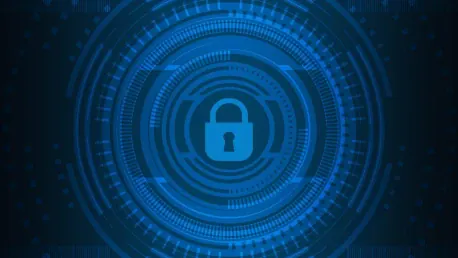The Protection of Critical Infrastructures (Computer Systems) Bill, recently gazetted in Hong Kong, marks a pivotal moment in the region’s cybersecurity journey. This legislation stems from a series of public consultations and aims to offer much-needed clarity and regulation concerning critical infrastructures and computer systems in Hong Kong. This summary breaks down the key components of the Bill, compares it with existing cybersecurity measures in Mainland China, and elaborates on its implications for relevant parties.
Key Themes and Aspects of the Bill
Entities Covered by the Bill
The Bill introduces three primary categories for regulation: Critical Infrastructure (CI), Critical Computer Systems (CCS), and Critical Infrastructure Operators (CIO). CI refers to essential infrastructure in sectors such as telecommunications, broadcasting, energy, IT, banking, financial services, transport, and healthcare. CI also includes any other infrastructure deemed critical by the Commissioner if its compromise would significantly impact societal or economic activities in Hong Kong.
CCS are designated computer systems essential to the core functions of CI, whether operated by the infrastructure’s operator or not. The Bill gives the Commissioner the authority to designate which computer systems fall under this category. CIOs are designated operators of CI, responsible for maintaining the security and integrity of critical infrastructures. These definitions and categories ensure comprehensive coverage of entities involved in critical infrastructure, acknowledging the interconnected nature of modern systems and the necessity of robust cybersecurity measures.
By establishing clear definitions and criteria, the Bill aims to bring Hong Kong’s cybersecurity regulations in line with international standards. This comprehensive approach is crucial, as it addresses not only the physical infrastructure but also the critical computer systems that operate and manage these infrastructures. The inclusion of CIOs acknowledges the pivotal role these operators play in maintaining the security and resilience of critical infrastructures, ensuring that accountability is clearly defined and enforced.
Comparison with Mainland China’s Cybersecurity Framework
Definition of CI
The Bill references cybersecurity and critical infrastructure legislations from other jurisdictions, including Mainland China. In Hong Kong, CI is defined as essential infrastructure in specified sectors or any other infrastructure whose compromise would substantially impact societal or economic activities. In Mainland China, CI includes crucial network facilities and information systems in key industries which, if compromised, could significantly threaten national security, the economy, people’s livelihood, or public welfare. Both definitions emphasize specific sectors and the negative impacts of CI compromise, such as damage, loss of functionality, or data breaches.
The critical infrastructure definitions in both regions highlight the importance of these sectors in maintaining societal functions and economic stability. The emphasis on the potential impact of a CI compromise underscores the necessity for stringent cybersecurity measures and regulatory oversight. By comparing these definitions, it becomes evident that both Hong Kong and Mainland China recognize the critical role of these infrastructures in national security and public well-being, driving the need for comprehensive cybersecurity frameworks.
Subject of Regulation
The regulation in Hong Kong focuses on CI, CIO, and CCS, while Mainland China’s framework focuses on CI and CIO, without a separate category for CCS or explicit references to systems accessible from outside the jurisdiction. Both frameworks place primary obligations on CIOs, but Hong Kong’s framework includes specific provisions for CCS, aligning with modern cyber threats which leverage interconnected systems.
Hong Kong’s inclusion of CCS acknowledges the evolving nature of cyber threats and the critical role these systems play in the operation and security of CI. This proactive approach ensures that all components of critical infrastructure are covered, addressing potential vulnerabilities in both physical and digital realms. The focus on interconnected systems reflects the current cybersecurity landscape, where threats can originate from various sources and impact multiple systems simultaneously.
Responsible Regulatory Authorities
In Hong Kong, the primary authority is the Commissioner of Critical Infrastructure (Computer-system Security), supported by entities like HKMA (Hong Kong Monetary Authority) and CA (Communications Authority). In Mainland China, the Cyberspace Administration of China (CAC) is the key authority, with support from public security departments and relevant industry bodies. Both regions establish a central regulatory authority with supportive bodies to enforce cybersecurity measures. Aligning with majority respondents’ views, HKMA and CA are well-positioned to monitor their respective sectors, with the Commissioner overseeing broader cybersecurity obligations.
The establishment of a central regulatory authority in both regions ensures that cybersecurity measures are consistently enforced and monitored across all sectors. The involvement of sector-specific entities like HKMA and CA highlights the importance of specialized knowledge and expertise in addressing industry-specific cybersecurity challenges. This multi-layered approach ensures that all aspects of critical infrastructure security are covered, from regulatory oversight to sector-specific monitoring and enforcement.
Organizational and Preventive Obligations
Organizational Obligations (Category 1 Obligations)
Operators in Hong Kong must maintain a local office, notify changes, and establish a computer-system security management unit. In Mainland China, operators must notify operator changes and maintain independent security management institutions. Both laws require dedicated internal units and personnel for network security and notification of certain types of operator changes.
These organizational obligations emphasize the importance of having dedicated resources and personnel focused on cybersecurity within organizations. By requiring operators to establish local offices and security management units, the Bill ensures that there are clear lines of responsibility and accountability for cybersecurity measures. This focus on internal units and personnel is crucial for maintaining a proactive and responsive approach to cybersecurity.
The requirement for operators to notify changes ensures that regulatory authorities are kept informed of any significant developments or changes within organizations that could impact cybersecurity. This proactive communication helps regulatory authorities to monitor and respond to potential risks in a timely manner. By aligning these organizational obligations with those in Mainland China, Hong Kong’s Bill ensures consistency and harmonization in cybersecurity measures across the region.
Preventive Obligations (Category 2 Obligations)
In Hong Kong, preventive obligations include notification of material changes, implementation of security management plans, annual security risk assessments, and biennial security audits. Mainland China requires notification of material changes, internal security management systems, and annual cybersecurity assessments. Both regions mandate internal cybersecurity plans and periodical protective practices, but the Mainland does not specify an audit requirement.
Preventive obligations are crucial for maintaining a proactive approach to cybersecurity. By requiring organizations to implement security management plans and conduct regular risk assessments and audits, the Bill ensures that potential vulnerabilities are identified and addressed before they can be exploited. This preventive approach helps to mitigate risks and enhance the overall security of critical infrastructures.
The inclusion of biennial security audits in Hong Kong’s Bill emphasizes the importance of continuous monitoring and improvement of cybersecurity measures. These audits provide an opportunity for organizations to evaluate the effectiveness of their security practices and make necessary adjustments. By aligning these preventive obligations with those in Mainland China, Hong Kong’s Bill ensures a consistent and comprehensive approach to cybersecurity across the region.
Incident Reporting and Response Obligations
Incident Reporting and Response Obligations (Category 3 Obligations)
Entities in Hong Kong must partake in drills, implement emergency response plans, and notify security incidents within specific timeframes. Mainland China similarly requires drills, emergency response plans, and prompt reporting of incidents. Both frameworks emphasize incident reporting and response, but Hong Kong’s Bill is more prescriptive regarding reporting timelines.
Incident reporting and response obligations are critical for ensuring a swift and effective response to cybersecurity incidents. By requiring entities to implement emergency response plans and participate in drills, the Bill ensures that organizations are prepared to handle potential incidents. This preparedness helps to minimize the impact of incidents and ensures a coordinated response from all relevant parties.
The prescriptive nature of Hong Kong’s Bill regarding reporting timelines ensures that regulatory authorities are promptly informed of security incidents. This timely reporting helps regulatory authorities to coordinate responses and take necessary actions to mitigate risks. By aligning these incident reporting and response obligations with those in Mainland China, Hong Kong’s Bill ensures a consistent approach to incident management across the region.
Penalties for Non-Compliance
Penalties in Hong Kong range from HKD 300,000 to 5 million depending on the category of non-compliance. In Mainland China, penalties range between RMB 100,000 to 1 million. Maximum fines in Hong Kong align with initial government proposals, despite concerns about severity.
The imposition of penalties for non-compliance underscores the importance of adhering to the cybersecurity obligations outlined in the Bill. These penalties serve as a deterrent, encouraging organizations to prioritize cybersecurity measures and comply with the regulatory requirements. By aligning the maximum fines with initial government proposals, the Bill ensures that the penalties are proportionate and reflect the severity of non-compliance.
By comparing the penalties in Hong Kong and Mainland China, it becomes evident that both regions recognize the importance of enforcing cybersecurity measures through financial penalties. These penalties help to ensure that organizations take their cybersecurity obligations seriously and prioritize the protection of critical infrastructures. The consistency in penalty structures across the region ensures a harmonized approach to enforcement and compliance.
Practical Implications and Recommendations
For CIOs and CI Operators
With the phased designation of CIOs and CCSs, existing information security frameworks should be reviewed and possibly upgraded to ensure compliance with new obligations. This includes consolidating operations and response procedures, scrutinizing existing supplier contracts, and ensuring adequate compensatory, audit, termination rights, and service level assurance clauses. This approach mirrors the relationship between data users and processors under the Hong Kong Personal Data (Privacy) Ordinance.
The phased designation of CIOs and CCSs allows organizations to gradually adapt to the new regulatory requirements. By reviewing and upgrading existing information security frameworks, organizations can ensure compliance with the new obligations and enhance their overall cybersecurity posture. This proactive approach helps organizations to identify and address potential vulnerabilities and ensure that their security practices are aligned with the latest regulatory requirements.
The scrutiny of existing supplier contracts is crucial for ensuring that third-party service providers comply with the new cybersecurity obligations. By including compensatory, audit, termination rights, and service level assurance clauses in contracts, organizations can ensure that their suppliers are held accountable for their cybersecurity practices. This approach helps to mitigate risks associated with third-party service providers and ensures a comprehensive approach to cybersecurity.
For Computer System Service Providers
Third-party service providers, especially those offering IT, cloud, or outsourcing services, can expect indirect regulation as CIO or CI customers will likely pass statutory obligations down through service agreements. Concerns have been raised about CIOs’ liability over third-party providers, but these provisions remain, with due diligence and reasonable endeavor guidelines to be outlined in later Codes of Practices. For cross-jurisdictional service suppliers, a harmonized approach to critical infrastructure obligations across Hong Kong and Mainland China may emerge, underscoring the need to stay abreast of developments.
The indirect regulation of third-party service providers ensures that all entities involved in the operation and management of critical infrastructures adhere to the new cybersecurity obligations. By passing statutory obligations down through service agreements, CIOs and CI operators can ensure that their service providers comply with the regulatory requirements. This approach helps to mitigate risks associated with third-party providers and ensures a comprehensive approach to cybersecurity.
Concerns about CIOs’ liability over third-party providers highlight the importance of due diligence and reasonable endeavor guidelines. These guidelines, to be outlined in later Codes of Practices, will provide clarity on the expectations and responsibilities of CIOs and their service providers. For cross-jurisdictional service suppliers, a harmonized approach to critical infrastructure obligations across Hong Kong and Mainland China may emerge, highlighting the importance of staying informed about regulatory developments and ensuring compliance with the latest requirements.
Conclusion
The recently gazetted Protection of Critical Infrastructures (Computer Systems) Bill in Hong Kong signifies a crucial step forward in the region’s cybersecurity framework. Rooted in extensive public consultations, this legislation is designed to provide clear regulations and guidelines for the protection of critical infrastructures and computer systems within Hong Kong. The Bill is a direct response to the growing need for stronger cybersecurity measures in light of increased digital threats.
This new Bill aims to offer definitive direction and control over the security of essential systems and infrastructures, which are integral to maintaining the functionality and safety of Hong Kong’s critical services. By establishing these regulations, the Bill seeks to enhance the resilience and reliability of critical sectors, ensuring they are better prepared to handle and mitigate cyber threats.
Additionally, the Bill stands in contrast to existing cybersecurity regulations in Mainland China, highlighting differences in approaches and priorities between the two regions. While Mainland China’s cybersecurity laws focus heavily on stringent control and monitoring, the Hong Kong Bill appears to strike a balance between regulation and flexibility, aiming to safeguard critical infrastructures without stifling innovation.
The implications of this Bill are far-reaching for businesses, government entities, and other key stakeholders in Hong Kong. It necessitates heightened awareness and preparedness, enforcing a new standard of cybersecurity that all relevant parties must adhere to. This step underscores Hong Kong’s commitment to evolving its digital security measures, ensuring that it can effectively face current and future cyber threats.









